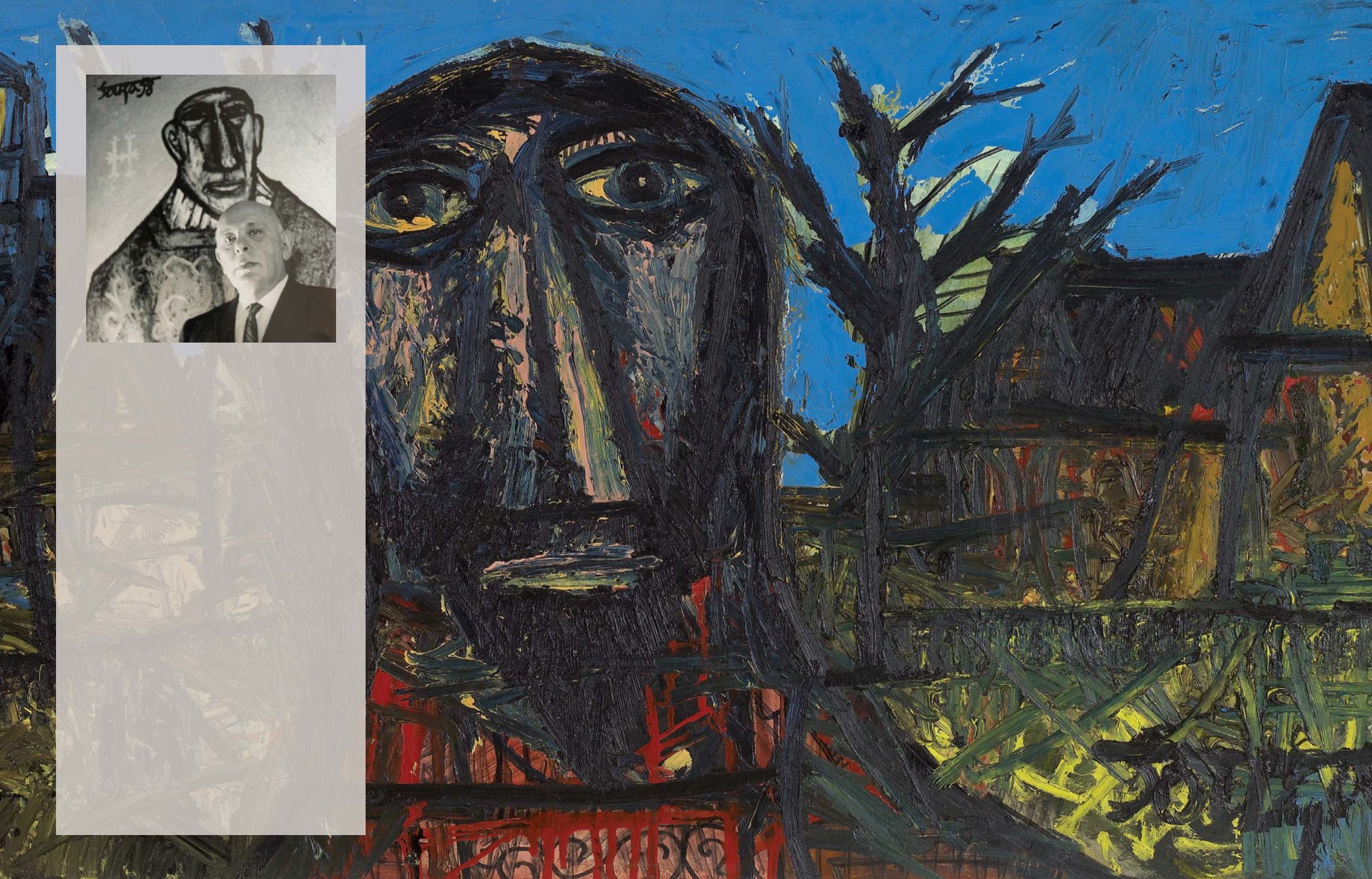

102
103
Souza has referred frequently to the profound impact of
the Roman Catholic Church on his life and art. For him,
it is “…not its dogmas but its grand architecture and the
splendour of its services…The wooden saints painted
with gold and bright colours staring vacantly out of their
niches. The smell of incense, and the enormous crucifix
…” (F N Souza,
Words and Lines
, London: Villiers, 1959,
p. 10) In the present lot, Souza paints a benevolent
Christ dressed in an ornate red robe, his frontal gaze
reminiscent of ‘the wooden saints’ or Byzantine icons.
Although the subject retains the high‒set eyes and
tubular nose of the artist’s more critical renditions,
this Christ is sombre and melancholic. Set against a
quiet village landscape, Souza offers a peaceful portrait
conveying little of his cynicism and prejudices. Instead,
this large painting conveys the largely concealed sense
of religious awe that Souza rarely revealed. “Some of
the most moving of Souza’s paintings are those which
convey a spirit of awe in the presence of a divine
power...” (Edwin Mullins,
F N Souza
, London: Anthony
Blond Ltd., 1962, p. 40)
HAROLD KOVNER
In 1956, Souza found his first major patron, the wealthy
American collector and hospital owner Harold Kovner,
through a gallery in Paris. Having arrived from New York
looking for new artists, Kovner went to Gallery Iris Clert,
but was unimpressed by their collection of abstracts. The
eponymous gallery owner possessed several paintings
by Souza, and showed some of these works to Kovner
with some reluctance. “Kovner jumped. Within 24 hours
he had met Souza, given him money, taken away some
pictures, made arrangements for the future, and was
flying back to New York. The arrangement was a perfectly
simple one. Souza was to keep him supplied with pictures
every few months – entirely of the artist’s choosing – and
in return Kovner would keep him supplied with money.”
(Edwin Mullins,
F N Souza
, London: Anthony Blond Ltd.,
1962, p. 26)
The duration of this patronage, which lasted four years,
was creatively and artistically, the most energizing period
of Souza’s career. Kovner’s regular stipend relieved Souza
of financial troubles, allowing him more freedom to paint
than ever before. Kovner’s support during this critical
period was a time of unprecedented inventiveness for
the artist. The present lot was part of Kovner’s original
collection of Souza paintings.
Harold Kovner with his portrait by Souza
Image courtesy of Victor Kovner


















